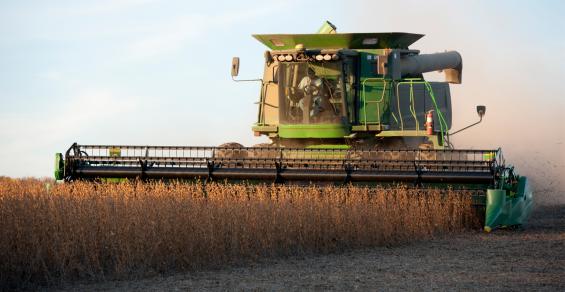As harvest charges on, remember to keep safety a priority.
As many producers around the region are in the thick of harvest, it’s always a good idea to remember ways to stay safe during harvest. Make sure your harvest ends safely with these three tips:
1. Take care of yourself. As many producers know, harvest can be a 24/7 job to get the crop in as quickly as possible. Even when working with these timelines, remember to take enough time to sleep and rest.
While eight or nine hours of sleep might not be possible, trying to get a solid night of sleep and even a rest or nap during the day can help keep yourself alert and functioning well. Being fatigued can easily leave you vulnerable for accidents and other mistakes to occur.
Eating full and nutritious meals and drinking water can also help you to feel your best during the long hours of harvest.
2. Take care of your equipment. Making sure that your equipment is running smoothly can help avoid accidents. Some types of equipment may be susceptible to harvest fires, so take care to thoroughly clean this equipment often.
When making repairs or conducting maintenance on your equipment, take the additional time to turn the equipment off first. Leaving equipment on could put a limb or even your life in jeopardy.
Wear close-fitting clothes and refrain from long jewelry when working on or near equipment to avoid becoming snared or pulled into the machinery. Make sure to always wear the proper personal protection equipment your task requires, including eye and ear protection.
3. Take care on the road. Driving on roadways with slow-moving equipment can be a nerve-wracking experience. The U.S. Census reports that in 2020 alone, 368 farmers or farmworkers died from a work-related incident. The majority of these deaths were caused from transportation accidents.
Farmers can help protect themselves by avoiding traveling after sunset or at times of heavy traffic, if possible. If driving at night, cleaning headlights and taillights will increase visibility when combined with equipment flashers.
Also, make sure all safety lights are on and working, and reflective placards are used. Drive only at speeds that you can control. Transport combine heads separately when traveling on the road, and avoid all driving distractions, especially cellphones.
Those sharing the road with farm equipment play an equally important safety role. Be patient and slowdown around large equipment. It would take just 18 seconds for a vehicle traveling 65 mph to meet a combine traveling at 15 mph. Avoid tailgating equipment, as machinery may need to stop or turn suddenly. Machinery will often move over for other vehicles to pass.
Be sure to double-check for oncoming traffic, and look for turn signals on the equipment to ensure it is safe to pass. When meeting equipment head-on, don’t be afraid to slow down and drive on the road shoulder, if possible, to leave the equipment as much room as possible.
Taking care of yourself and your equipment, and being cautious on the road can help ensure your harvest season ends with you safely making it back home.
North Dakota State University and South Dakota State University contributed to this article.




